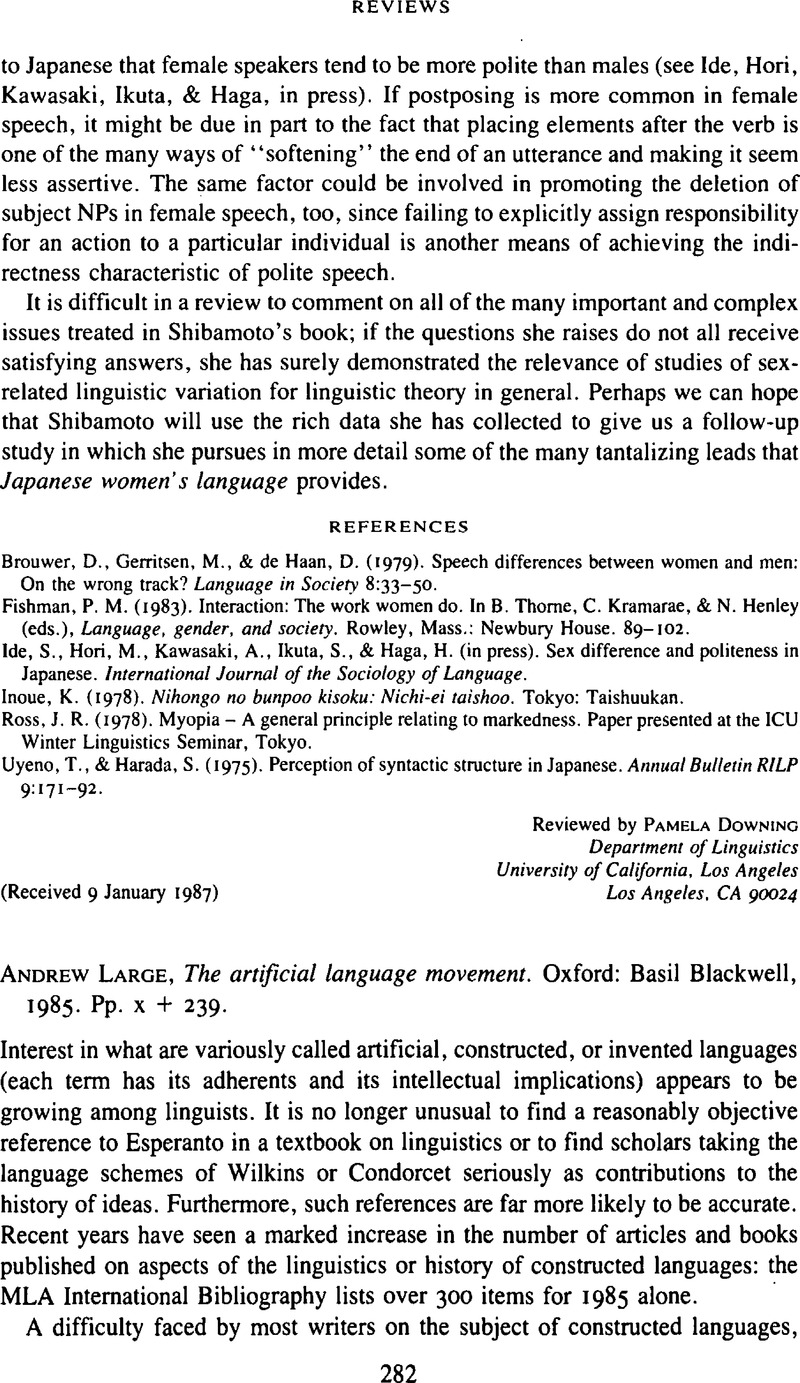No CrossRef data available.
Article contents
Andrew Large, The artificial language movement. Oxford: Basil Blackwell, 1985. Pp. x + 239.
Published online by Cambridge University Press: 18 December 2008
Abstract
An abstract is not available for this content so a preview has been provided. Please use the Get access link above for information on how to access this content.

- Type
- Book Review
- Information
- Copyright
- Copyright © Cambridge University Press 1988
References
REFERENCES
Burney, P. (1962). Les langues internationales. Paris: Presses Universitaires de France.Google Scholar
Cohen, M. (1977). Sensible words: Linguistic practice in England 1640–1785. Baltimore: Johns Hopkins University Press.Google Scholar
Edwards, J. (1986). Esperanto and an international research context. In Tonkin, H. & Johnson-Weiner, K. (eds.), The idea of a universal language. (Report of the Fourth Annual Conference of the Center for Research and Documentation on World Language Problems.) New York: The Center. 97–107.Google Scholar
Knowlson, J. R. (1975). Universal language schemes in England and France 1600–1800. Toronto: University of Toronto Press.CrossRefGoogle Scholar
Lapenna, I. (1964). Yes, Esperanto is the answer to the world language problem. (Research and Documentation Centre Doc. A/IV/4–6.) Rotterdam: Universal Esperanto Association.Google Scholar
Lins, U. (1973). La danĝera lingvo: Esperanto en la uragano de la persekutoj. Kyoti, Japan: L'omnibuso.Google Scholar
Piron, C. (1981). Esperanto: European or Asiatic language? (Esperanto Documents 22A.) Rotterdam: Universal Esperanto Association.Google Scholar
Salmon, V. (1979). The study of language in 17th-century England. Amsterdam: Benjamins.Google Scholar
Shapiro, B. J. (1969). John Wilkins 1614–1672: An intellectual biography. Berkeley: University of California Press.CrossRefGoogle Scholar
Slaughter, M. M. (1982). Universal languages and scientific taxonomy in the seventeenlh century. Cambridge: Cambridge University Press.Google Scholar
Tonkin, H. (1968). Code or culture: The case of Esperanto. Era (University of Pennsylvania) 4, 2: 5–21.Google Scholar
Waringhien, G. (1970). Plena ilustrita vortaro de Esperanto. Paris: Sennacieca Asocio Tutmonda.Google Scholar
Wells, J. C. (1978). Lingvistikaj aspektoj de Esperanto. Rotterdam: Universala Esperanto-Asocio.Google Scholar
Wood, R. E. (1979). A voluntary non-ethnic, non-territorial speech community. In Mackey, W. F. & Ornstein, J. (eds.), Sociolinguistic studies in language contact: Methods and cases. The Hague: Mouton. 433–50.Google Scholar
Wüster, E. (1931). Internationale Sprachnormung in der Technik, besonders in der Elektrotechnik. Berlin: VDI-Verlag.Google Scholar




